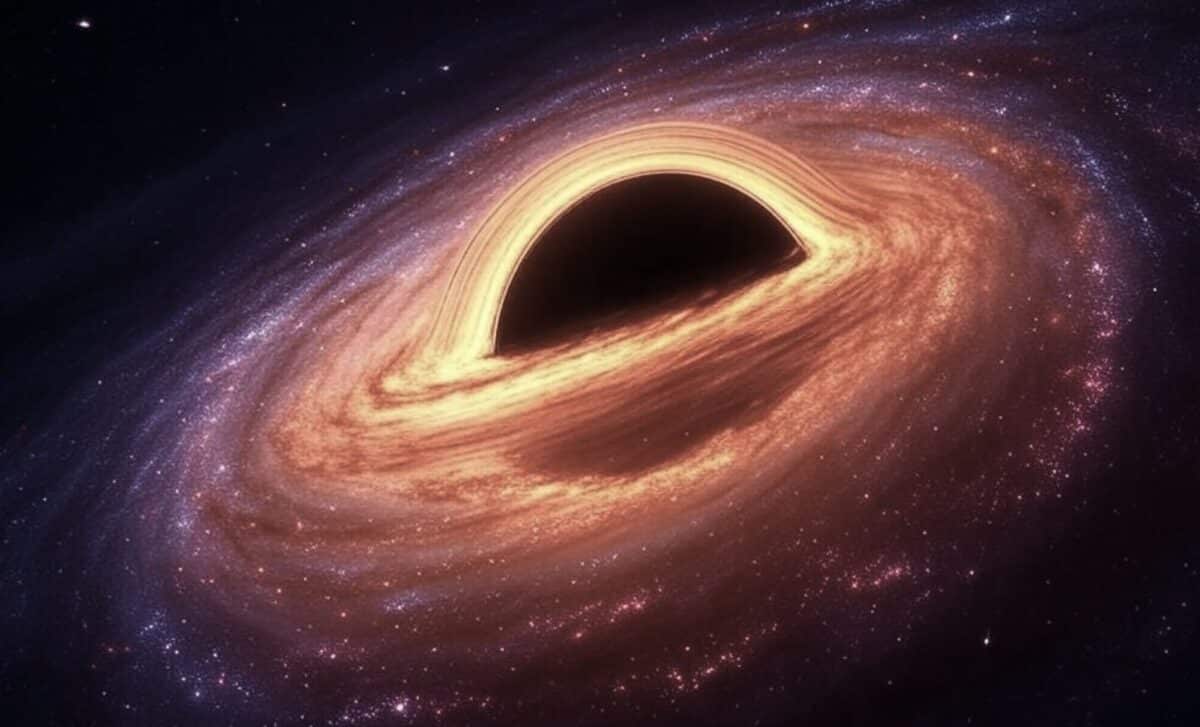
Arezki Amiri Published on December 26, 2024
Collected at: https://dailygalaxy.com/2024/12/nasas-hubble-and-chandra-uncover-an-upside-down-black-hole-in-a-galactic-wreckage/
In a revelation that challenges conventional theories, NASA astronomers have identified a supermassive black hole in the heart of the galaxy NGC 5084 spinning at odds with its host galaxy. This extraordinary finding may reshape how we understand the dynamics of galaxies and the enigmatic black holes that reside within them.
NGC 5084: An Unassuming Galaxy Hiding a Dramatic Secret
Nestled approximately 100 million light-years away in the Virgo constellation, NGC 5084 is classified as an elliptical galaxy and has long been a subject of interest for astronomers. It was discovered in 1784 by William Herschel, whose contributions to galactic catalogs have shaped modern astronomy. Instruments like Chandra X-ray Observatory, the Hubble Space Telescope, and the Atacama Large Millimeter Array (ALMA) have studied this galaxy extensively, yet recent observations revealed a surprise.
Employing a novel analytical method called SAUNAS (Selective Amplification of Ultra Noisy Astronomical Signal), researchers isolated faint X-ray emissions that had been previously obscured by stronger radiation. This technique, designed to amplify weak signals while suppressing background noise, unveiled a startling feature: NGC 5084’s central black hole rotates at an angle misaligned with the rest of the galaxy.

To better understand the unique features of NGC 5084 and the peculiar behavior of its central black hole, key details about the galaxy and the observations leading to this discovery are summarized below:
| Property | Details |
|---|---|
| Distance from Earth | ~100 million light-years |
| Galaxy type | Elliptical |
| Discovery | 1784 by William Herschel |
| Observational tools | Hubble, Chandra, ALMA |
| Unique phenomenon observed | Misaligned supermassive black hole rotation |
| Novel technique used | SAUNAS |
Four X-Ray Plumes and a Rogue Black Hole
Researchers were astonished to observe not the usual two, but four distinct plumes of X-ray radiation extending from the galactic core. Typically, supermassive black holes produce twin jets aligned with the galaxy’s rotational axis. However, the pattern in NGC 5084 is exceptional:
- Two plumes align with the galaxy’s plane.
- Two additional plumes extend perpendicularly above and below the plane.
This unique configuration hinted at a more significant anomaly. Additional analysis using Hubble and ALMA revealed an inner dust disk tilted at a stark 90-degree angle to the galaxy’s main axis. These observations confirmed that the black hole is not rotating in sync with the galaxy, a phenomenon rarely seen in cosmic dynamics.
What Disrupted Ngc 5084’s Cosmic Balance?
The peculiar misalignment likely stems from a galactic collision or gravitational disturbance. Galactic mergers, while infrequent, are powerful enough to dramatically alter the orientation of supermassive black holes. Such events often result in chaotic redistribution of stars, gas, and dust, potentially tilting black holes off their rotational axis.
Astronomers hypothesize that NGC 5084 may have collided with a smaller galaxy or interacted with a massive structure. The force from such an event could explain both the tilted black hole and the unusual X-ray plume configuration.
Potential Signs of past Disturbances
- Tilted dust disk: A feature seen in NGC 5084’s inner core, suggesting past gravitational turbulence.
- X-ray plumes: These jets are often linked to violent black hole activity, reinforcing the idea of recent galactic upheaval.
Rewriting the History of Black Holes and Galaxies
This groundbreaking discovery prompts critical questions: How common are such misalignments? Are collisions the only explanation? Could this behavior impact the lifecycle of galaxies and their black holes?
As investigations continue, NGC 5084 serves as a natural laboratory for understanding the long-term effects of galactic interactions. This misaligned black hole may hold the key to unraveling deeper mysteries about the universe’s tumultuous past and the dynamic forces shaping its future.
The research was published in the Astrophysical Journal.

Leave a Reply